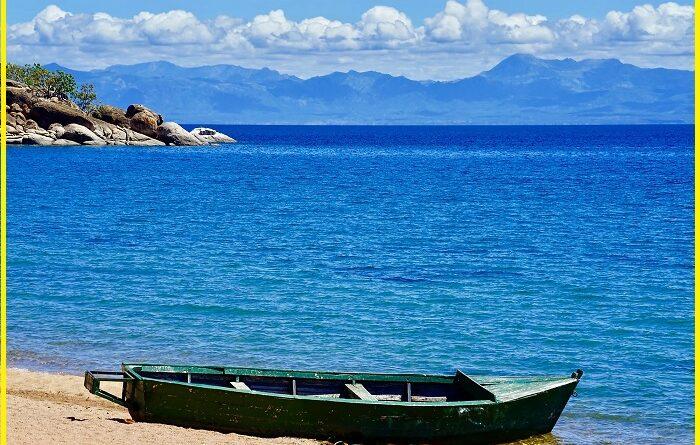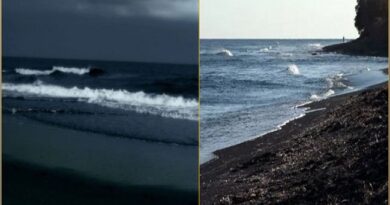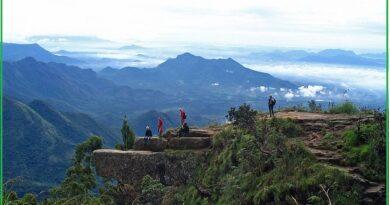The African Great Lakes and its Impressive story
The African Great Lakes
The African Great Lakes are a series of lakes located around the Great Rift Valley in the Great Lakes Region of Africa. The size of these lakes varies from large water bodies like Lake Victoria (68800 sq kilometers) to Lake Kivu (2219 sq kilometers). The African Great Lakes are classified based on river basins, the presence of a draining river, and the size of the lake. The African Great Lakes region comprises countries including Kenya, Uganda, the Democratic Republic of Congo, Burundi, Rwanda, and Tanzania. The lakes include Lake Victoria, Lake Tanganyika, and Lake Malawi. Collectively, they contain water, which is more than either Lake Baikal or the North American Great Lakes.
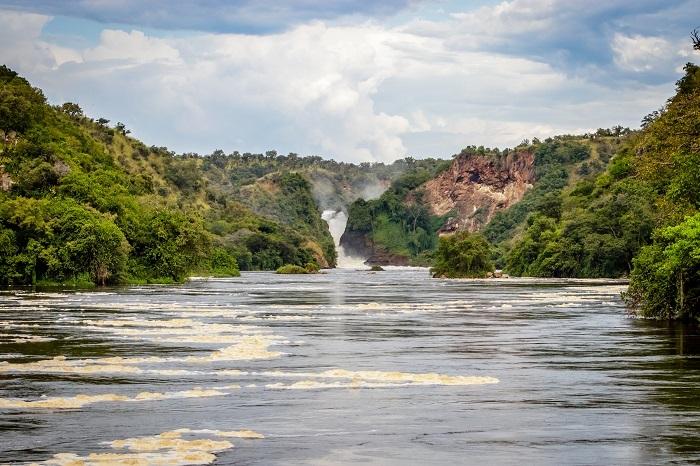
How did the African great lakes form
The origin of lakes dates back to nearly 12 million years ago when the tectonic plates of Eastern Africa moved to the northeast of the rest of Africa. This movement created the Great Rift Valley and diverted the flow of rivers into depressions which developed into lakes. Due to the Formation of Rift valley, the waters of the equatorial plateau either flowed west into the Congo River system or east to the Indian Ocean. A depression formed in the middle of the two rifts forced the rivers on either side of the depression to drain into the lake.
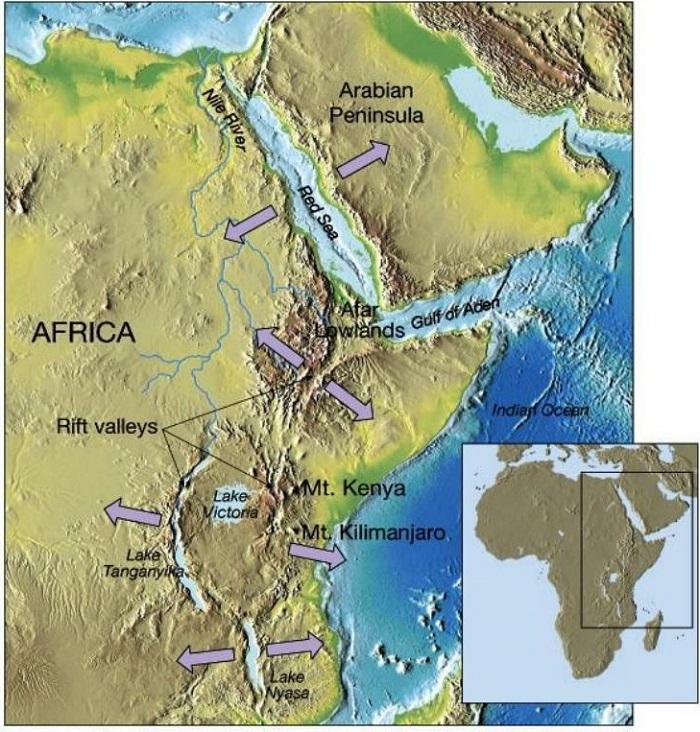
A rift is a weak zone in Earth’s crust due to the separation of two tectonic plates and forming a new crust. Rift accompanied by a graben, or trough, in which lake water can collect. This rift valley formed when East Africa, was impelled by currents in the mantle and began separating from the rest of Africa due to the magma eruption. The basins that resulted from the geological uplifts filled with water that now flowed north. Lake Victoria is not actually within the Rift Valley. It occupies a depression between the Eastern and Western Rifts, formed by the uplift of the rifts to either side.
Lakes that drain into the Nile are Lake Victoria, Lake Kyoga, Lake Albert, and Lake Edward.
Lakes that drain into the Congo River are Lake Tanganyika, Lake Kivu, and Lake Mweru
Lake that drains into the Zambezi is Lake Malawi, via the Shire River
Lakes with closed basins are Lake Turkana andLake Rukwa
African Great Lakes region
The Great Lakes region consists of 10 riparian countries- Burundi, the Democratic Republic of the Congo, Ethiopia, Kenya, Malawi, Mozambique, Rwanda, Tanzania, Uganda, and Zambia. The Swahili language is the most commonly spoken language in the African Great Lakes region. It also serves as the national or official language of five nations in the region- Tanzania, Kenya, Uganda, Rwanda, and the Democratic Republic of the Congo.
The African Great Lakes map shows the region including the East African Rift and the entire Great Rift Valley, The African Great Lakes, are a series of lakes constituting part of the Rift Valley lakes in and around the East African Rift.
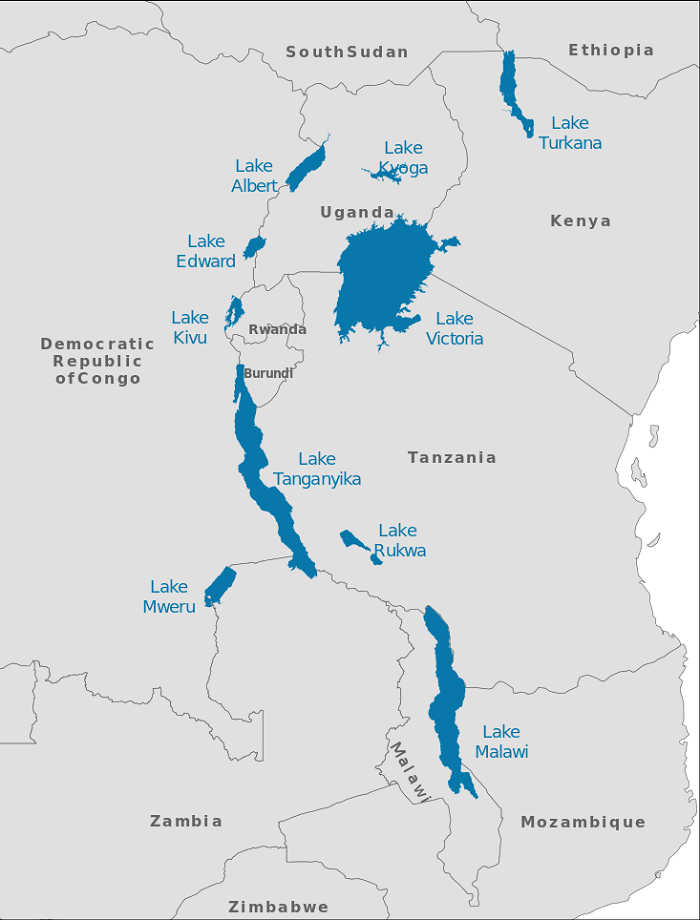
The great lakes of Africa, Lakes Victoria, Malawi, and Tanganyika, are located in East Africa in the vicinity of the Great Rift Valleys and hold approximately 27% of the world’s freshwater. Lake Victoria is set between the Rift Valleys and is bounded by uplifted mountains and highlands that form with rifting. Compared to the other lakes, lake victoria is geologically younger (nearly 0.5 million years) and much shallower with the lower water clarity. Lakes Tanganyika and Malawi are older, deeper set within the rift valleys. These deep lakes have exceptional water quality and water clarity.
Climatic Conditions
The African Great Lakes region has 3 major drainage basins- The Nile Basin, Congo-Zaire Basin, and Zambezi River Basin. The Nile Basin drains into the Mediterranean Sea, the Congo-Zaire Basin drain into the Atlantic Ocean, and the Zambezi River flows into the Indian Ocean. The climatic conditions of this region vary from the cool highland climate of the Nile Basin and Congo-Zaire Basin to the grassland and savannah of the Zambezi Rivers.
The Lake Turkana region is arid and the temperature is generally high throughout the year. The lakes in the Western Rift Valley have rainforests while those on the East African Rift have papyrus reeds and water hyacinths. Freshwater lakes have a great variety of fish, mammals, and numerous crocodiles. 10% of the world’s fish species live in this region Lake Turkana has numerous species of birds endemic to Kenya such as flamingos.
Read more- The Heaven of Gorges-Karijini National Park Australia
The East African Great Lakes are known for a wide range of flora and fauna- like fishes that are a substantial portion of the lakes’ native ichthyofauna. Each lake, however, has a unique fish community, in part due to different geological histories as well environmental and ecological effects.
African great lakes area
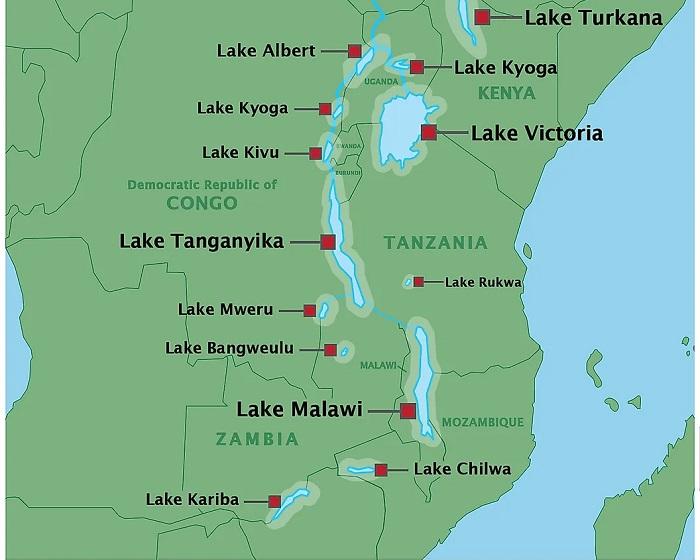
Fossils Discoveries in Great Lakes Region
African Great Lakes Turkana has many paleontological discoveries. In 1972, Richard Leakey discovered a 2 million-year-old skull which was named Homo Rudolf enosis. A complete skeleton of Homo erectus named Turkana boy was discovered In 1984. Recently, a 3.5 million-year-old skull was discovered and named Kenyanthropus platypus.
Sources-Worldatlas.com, globalgreatlakes.org, Wikipedia.org
